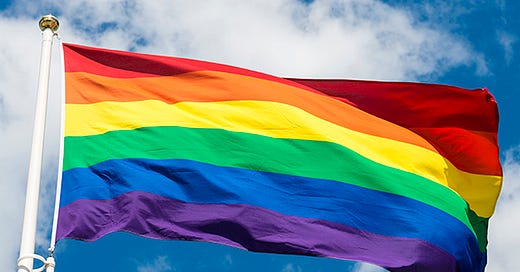YouTube removes 'gender identity' from hate speech policy
TariffTokers, Gen Z’s ‘it couple’, Easter potatoes, anti-MAGA hats, Zuck's D.C. mansion, Amazon's TikTok bid, Silicon Valley's cupid, and the fastest growing political channels on YouTube
To unlock more of my reporting on how the internet is reshaping politics, business, media, and culture, and to read my deep dives into emerging online spaces and internet trends, become a paid subscriber today!
I cannot produce this newsletter without your financial support. Your money goes directly towards reporting costs.
Sometime between January 25th and February 7th of this year, shortly after Trump took office, YouTube quietly updated its hate speech policy to remove the phrase “gender identity.”
YouTube doesn’t allow hate speech toward a number of groups. Content that promotes violence or hatred towards users over their race, nationality, religion, disability, and veteran status is explicitly barred. Hate speech against someone’s “gender identity and expression” was also once barred, but that phrase has since been removed.
The removal of the “gender identity and expression” category has caused anger in the trans and non binary communities, who see it as a direct attack on their ability to safely use the platform.
“YouTube quietly removing ‘gender identity and expression’ from its list of protected groups is a major radical shift away from best practices in the field of trust and safety and content moderation,” a spokesperson for GLAAD told me. “Like Meta’s recent dangerous rollbacks of hate speech protections for transgender and nonbinary people, the removal of these specific words appears to be a responsive alignment with the anti-LGBTQ agenda of Project 2025, which calls for targeting ‘woke culture warriors … start[ing] with deleting the terms sexual orientation and gender identity.’”
Under the list of examples of hate speech provided on YouTube’s policy site, the line “[Protected group status] is just a form of mental illness that needs to be cured,” was also removed.
A YouTube spokesperson said that the removal of “gender identity and expression” from the hate speech policy was part of regular copy edits to the website, and that the enforcement of the policy hasn’t changed. Hate speech toward someone over their “sex, gender, or sexual orientation” is still barred, however critics say that “gender” is very different than “gender identity and expression.”
According to the World Health Organization, gender and sex are related to, but categorically different from, “gender identity.” “Gender identity refers to a person’s deeply felt, internal and individual experience of gender, which may or may not correspond to the person’s physiology or designated sex at birth,” the WHO reports.
“If YouTube’s hate speech policy really does still protect people from being targeted with hate on the basis of ‘gender identity,’ the public-facing policy should continue to say that,” a GLAAD person said, adding that this removal would lead an average user to believe that the policy has changed.




